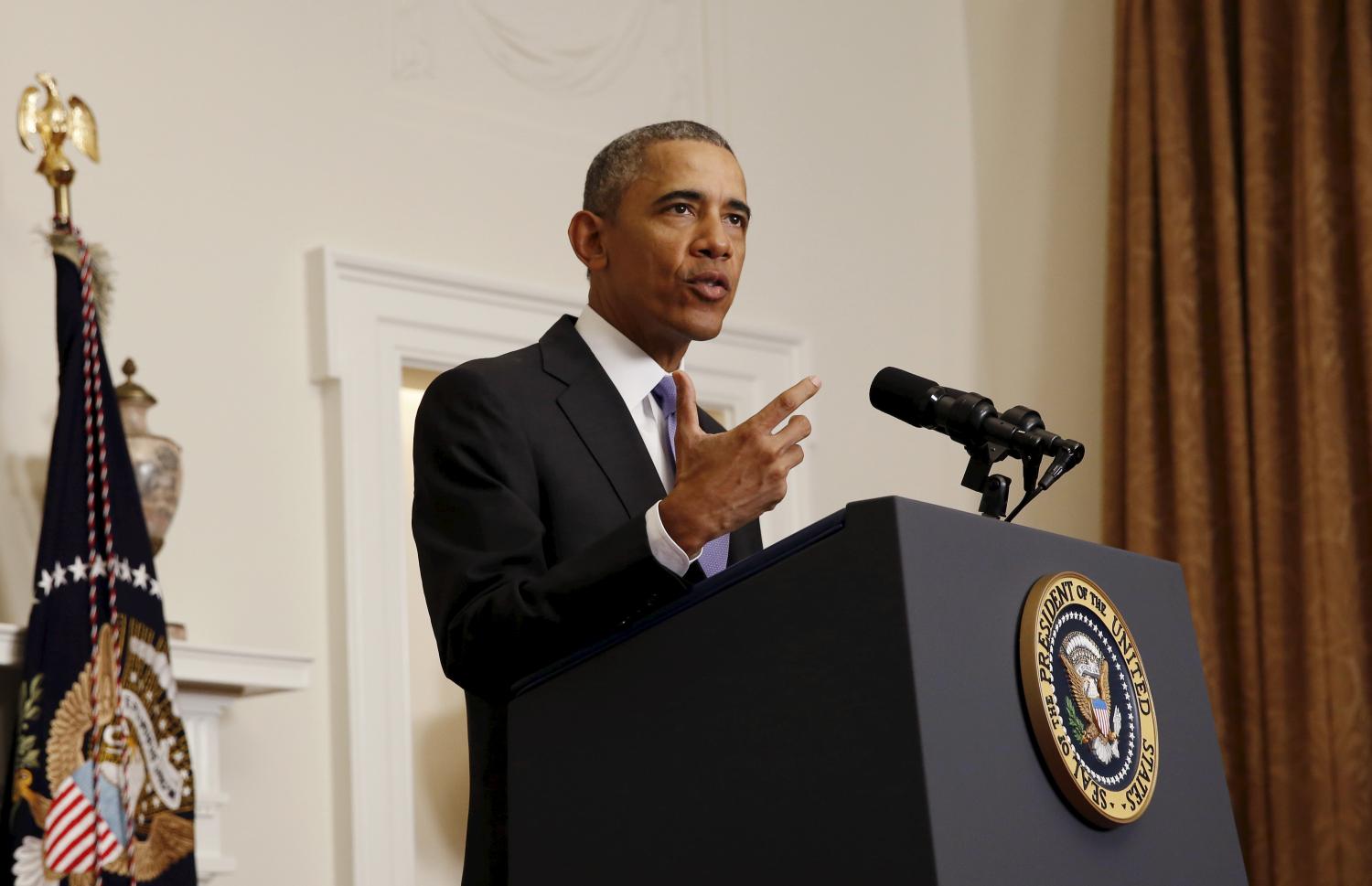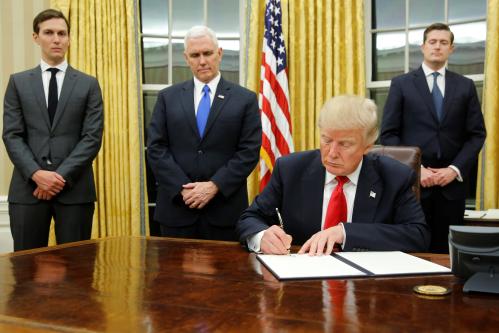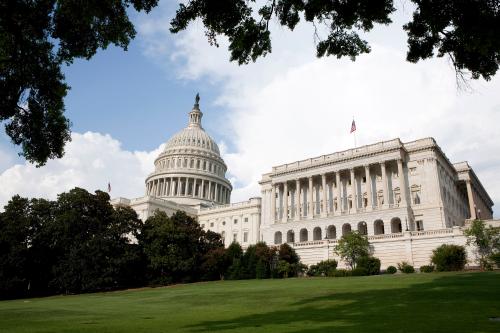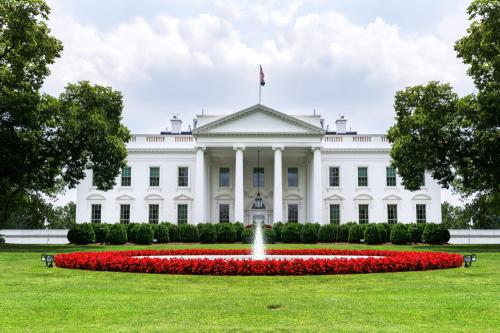This report is part of the Series on Regulatory Process and Perspective and was produced by the Brookings Center on Regulation and Markets.
The Trump administration recently unveiled a wide-ranging executive order directing federal agencies to review and streamline their rules. The natural question is whether this order will prompt a vigorous review that results in meaningful regulatory streamlining or end up as a mostly symbolic exercise. This piece sheds some light on this question, and on the efficacy of regulatory lookback programs more generally, by analyzing original data on the impact of the Obama administration’s retrospective review effort, which ran from 2011 through January 2017.
The Obama administration’s January 2011 executive order directed Cabinet agencies to develop and submit plans for reviewing, modifying, streamlining, and repealing unnecessarily burdensome regulations (independent regulatory agencies were encouraged to voluntarily submit such plans in a separate July 2011 executive order). The Office of Management and Budget provided additional guidance to agencies on complying with the review program later that year. Agencies submitted their original plans in 2012 and provided biannual progress reports through the end of the Obama administration. Some observers hailed the review program as a great success while others branded it as a “complete failure.”1 This piece evaluates the program at several points during its six-year life to assess these claims and to provide a more complete picture of the program, concluding that it achieved modest success in motivating agencies to revisit and improve existing regulations.
Analysis
Initial Agency Plans: A Modest Start
The initial set of agency plans (issued in 2012) generated relatively little public comment. Professor Joe Aldy’s report for the Administrative Conference of the United States counted the comments received on the plans for seven large and important agencies that engage in significant rulemaking.2 These plans received a total of 3,107 comments, or an average of 444 per agency.3 That level of interest is slight considering that individual rules such as the EPA’s recent greenhouse gas regulation received millions of comments.4 Such limited interest suggests that the review plans generally did not take up rules that attracted the attention of commenters. To take one example, the EPA’s 2011 review plan included a rule to eliminate the requirement that gasoline pumps capture ozone-producing vapors created during refueling on the grounds that technology in newer cars served the same function.5 The EPA estimated that the rule would save $87 million per year, yet this specific rule proposal generated only 30 comments.6
Initial rulemaking activity pursuant to the review plan was also fairly tepid. The Administration reported in May 2012—about 16 months after the retrospective review plan began—that agencies had proposed 100 retrospective review rules and finalized 50 of those rules. The EPA gasoline pump rule was among the rules finalized during this period.7 For context, agencies finalized 4,739 new rules (906 of which were reviewed by OMB) during the same 16 month period.8 The initial impact, therefore, appears quite modest relative to the Administration’s total ongoing rulemaking activity (and even smaller compared to the total volume of rules already on the books).
An Increase in Rulemaking Over Time
Rulemaking pursuant to the retrospective review plans increased somewhat over the next year. The Government Accountability Office examined the impact of the plans from 22 executive agencies through August 2013, or roughly 30 months after the retrospective review program began (see Table 1). By that time, the 22 agencies studied had issued a total of 225 final rules under retrospective review plans.9 For context, these same agencies issued a total of 7,644 rules during the same 30 month period.10 Rulemaking pursuant to the retrospective review program, therefore, comprised 2.9 percent of all rulemaking. Of course, not all rules are equally important (a concept measured below), and perhaps those adopted under the retrospective review plans were of outsized importance. Unfortunately, the GAO report does not include data on the importance of the rules issued under retrospective review plans, leaving open the question of whether they were more important, on average, than the general population of rules. The relatively low number of comments on the agency retrospective review plans suggests this is probably not the case, however.
| Table 1: Number of planned and completed retrospective regulatory analyses for 22 executive agencies | |||||
|---|---|---|---|---|---|
| Agency | Planned retrospective analyses in 201211 | Completed analyses with final action by August 31, 201312 | Total rules issued by agency between 1/18/11 and 8/31/1313 | Planned retrospective analyses as of July 201614 | Completed analyses with final action implemented by April 201715 |
| Department of Transportation | 98 | 36 | 1,656 | 30 | 7 |
| Department of Health and Human Services | 83 | 33 | 247 | 40 | 19 |
| Department of State | 73 | 31 | 22 | 14 | 7 |
| Department of Commerce | 46 | 24 | 838 | 35 | 26 |
| Environmental Protection Agency | 37 | 18 | 1,378 | 28 | 11 |
| Small Business Administration | 27 | 13 | 29 | 15 | 2 |
| Department of Defense | 37 | 11 | 168 | 86 | 54 |
| Department of Energy | 18 | 11 | 52 | 18 | 15 |
| National Aeronautics and Space Administration | 27 | 11 | 19 | 50 | 41 |
| Department of the Treasury | 18 | 9 | 220 | 10 | 4 |
| Department of Homeland Security | 21 | 8 | 1,998 | 7 | 3 |
| Department of Housing and Urban Development | 17 | 7 | 31 | 7 | 0 |
| Office of Personnel Management | 16 | 7 | 43 | 11 | 4 |
| Department of Labor | 20 | 7 | 46 | 19 | 4 |
| Department of Education | 15 | 6 | 56 | 15 | 6 |
| Department of the Interior | 16 | 4 | 193 | 16 | 9 |
| General Services Administration | 34 | 4 | 99 | 17 | 6 |
| Pension Benefit Guaranty Corporation | 14 | 3 | 37 | 4 | 4 |
| Social Security Administration | 16 | 3 | 29 | 11 | 4 |
| Department of Agriculture | 13 | 0 | 364 | 13 | 10 |
| Department of Justice | 2 | 0 | 41 | 13 | 2 |
| Department of Veterans Affairs | 17 | 0 | 78 | 0 | 0 |
| Total | 665 | 246 | 7,644 | 459 | 238 |
This piece turns to original data (see Table 1 and Table 2) on the agency progress reports filed in July 2016, more than five years into the retrospective program and near the end of the Obama administration. By July 2016, the 22 agencies examined in the GAO report had largely reported a new and different set of initiatives from those studied by the GAO.16 At this point, agencies reported 459 reform initiatives (see Table 1). Of these ideas, 238 had culminated in final rules by mid-April 2017.17 This output represents a relatively small but meaningful increase over activity in 2012 and 2013, suggesting that the program did gain some momentum over time. Still, the overall impact of the program was relatively modest compared to total regulatory activity, much less the number of rules already on the books. Given the relative magnitudes of new rulemaking and reviews, we can say that the Obama reviews did not come close to satisfying a 1-in-2-out mandate of the sort the Trump administration has committed to.
According to the original data, the retrospective review rules were more likely to be important than the average rule adopted during the Obama administration. Consider the following:
- Over 14 percent of retrospective review rules were judged as “major” under the Congressional Review Act. The “major” designation indicates that OMB believed the rule would have more than a $100 million annual economic impact or would otherwise have an important economic impact.18 Only 2 percent of all rules adopted during the Obama years were deemed “major.” (see Table 2). The EPA gasoline rule, for example, was estimated to have an $87 million annual economic impact and was deemed to be “non-major.”
- OMB deemed over 13 percent of retrospective review rules as “economically significant rules”19 (a category very similar to “major rules”). By comparison, 3 percent of all rules adopted during the Obama years were “economically significant.”
- Over 68 percent of retrospective review rules fell into the broader category termed “other significant rules.” This category includes rules expected to implicate important policy issues without having a $100 million annual economic impact.20 By contrast, only 12 percent of all rules adopted during the Obama years met this definition. OIRA designated the EPA gasoline vapor capture rule to be an “other significant” rule.
| Table 2: Agency retrospective plans in July 2016 | ||
|---|---|---|
| Final rules issued pursuant to review plans by April 2017 | Baseline: All Rules, 2008-2015 | |
| Initiatives listed that were classified by OMB21 | 459 | |
| Total final rules22 | 238 | 29,044 |
| Major rules23 | 34 (14 percent) | 665 (2 percent) |
| Economically significant rules24 | 32 (13 percent) | 947 (3 percent) |
| Other significant rules25 | 162 (68 percent) | 3,460 (12 percent) |
In short, the evidence strongly indicates that the rules adopted pursuant to the retrospective review program were more likely to be deemed important than the general population of rules.
Estimates of Aggregate Impact
The best estimates of the review program’s aggregate output come from OMB. OMB estimated that agencies completed a total of 800 review initiatives, many but not all of which resulted in changes to existing rules.26 During the period of the review program, agencies issued 21,991 total rules.27 Assuming that all 800 review initiatives resulted in a new rule, the review program would have constituted 3.6 percent of rulemaking activity from 2011 through 2016. This modest result is consistent with the analysis above. It is also important to consider that agencies have long engaged in retrospective review on their own initiative or because of other legal requirements.28 Attributing all of these rules solely to the review program, therefore, likely overstates its impact.
Conclusions
Proponents of the Obama retrospective review program claimed it would be transformative.29 Critics countered that it was empty, beginning with much rhetoric and producing little of substance as agencies went about their normal and preferred work of issuing new rules rather than looking back to evaluate their prior work.30 The data suggest that the truth lies between these opposing views. The review plan was not a quick splash that quickly disappeared. Instead, it was an ongoing effort that remained active at a relatively steady pace through 2016. While the review plans were modest relative to total ongoing rulemaking, they were not empty exercises. Rather, agencies followed through on a reasonable proportion of their plans such as the EPA’s gasoline pump vapor capture rule. Moreover, these rules were more important on average than the general population of rules adopted at the same time. Even critics of the review program acknowledge that it included rules that significantly reduced regulatory costs.31 In short, the data suggest that the retrospective review effort was a credible but small component of the Obama administration’s rulemaking efforts.
The data described here admittedly do not speak to all critiques of the retrospective review plan. The data do not directly address the critique that the rules adopted pursuant to the review plans actually added costs by imposing new regulations.32 The data do not speak to critiques that many of the rules imposed new regulatory requirements rather than assessing existing rules.33 The data also do not directly speak to the critique that the plans merely “recycled” old ideas that had been previously proposed.34 But even if that latter critique were empirically valid, it seems the review initiative should be credited for reviving stalled proposals. This can be no small feat in an era of under-resourced agencies confronting many competing priorities. As noted above, the data do not speak to the critique that agencies claimed credit for review initiatives they would have undertaken absent the review program. Finally, the data do not explain the wide variation in agency responses to the retrospective review plan, with some agencies such as the Department of Transportation responding vigorously while others such as the Department of Veteran’s Affairs did very little. All of these issues are worthy of future investigation.
The Obama experience suggests that future retrospective efforts need not be doomed to irrelevance.
The Obama experience suggests that future retrospective efforts need not be doomed to irrelevance. But to have a greater impact than the Obama plan, future efforts probably need to be backed by additional incentives for agency leaders to devote their scarce resources. Perhaps the most commonly proposed incentive is subjecting agencies to a regulatory budget that requires reducing regulation before being able to impose new rules. Requiring agencies to reform old rules before issuing new rules is thought to provide a stronger incentive to engage in serious retrospective review efforts than mere OMB encouragement and oversight.35 Interestingly, the Trump administration plan includes an initial requirement that agencies rescind two rules for every new rule and later imposes a requirement that agencies adhere to a regulatory budget. All else equal, the Trump plan therefore offers a new and potentially important opportunity to examine whether one of the mechanisms often suggested to improve retrospective review works as promised. It may also provide some insight into the argument that to achieve meaningful deregulation, retrospective review programs must impose substantive requirements on agencies to deregulate and cut costs rather than relying on more neutral cost-benefit analysis principles.
The SEC disclaims responsibility for any private publication or statement of any SEC employee or Commissioner. This Article expresses the author’s views and does not necessarily reflect those of the Commission or other members of the staff.
The author did not receive financial support from any firm or person for this article or from any firm or person with a financial or political interest in this article. He is currently not an officer, director, or board member of any organization with an interest in this article.
-
Footnotes
- See, e.g., Andrew M. Grossman, An Administration Takes sides, http://yalejreg.com/nc/an-administration-takes-sides-by-andrew-m-grossman (arguing that “everybody seems to agree that retrospective review has been an almost complete failure” and “genteel regulatory review hasn’t gotten us anywhere”).
- The agencies were: U.S. Department of Agriculture; Department of Energy; Department of Health and Human Services; Department of Homeland Security; Department of Justice; Department of Labor; Department of Transportation; Environmental Protection Agency
- See Administrative Conference of the United States, Retrospective Review Report, at page 97, https://www.acus.gov/report/retrospective-review-report.
- The EPA rule received over 4 million comments. See EPA Clean Power Plant Fact Sheet, https://obamawhitehouse.archives.gov/the-press-office/2015/08/03/fact-sheet-president-obama-announce-historic-carbon-pollution-standards.
- Environmental Protection Agency, Final Plan for Periodic Retrospective Review of Existing Regulations, at pages 32-33, https://obamawhitehouse.archives.gov/sites/default/files/other/2011-regulatory-action-plans/environmentalprotectionagencyregulatoryreformplanaugust2011.pdf.
- See EPA Docket, Widespread Use of Onboard Refueling Vapor Recovery and Stage II Waiver, https://www.regulations.gov/docket?D=EPA-HQ-OAR-2010-1076.
- Air Quality: Widespread Use for Onboard Refueling Vapor Recovery and Stage II Waiver, May 16, 2012, https://www.gpo.gov/fdsys/pkg/FR-2012-05-16/pdf/2012-11846.pdf.
- Based on data from GAO’s Congressional Review Act Database, http://www.gao.gov/fedrules.html, and OMB’s RegInfo database, https://www.reginfo.gov/public. Searches run from 1/18/11 to 5/1/12.
- Government Accountability Office, Agencies Often Made Regulatory Changes, at page 11, https://www.gao.gov/products/GAO-14-268.
- Search of GAO Rules Database, http://www.gao.gov/fedrules.html
- This column includes cases where the agency finalized the recommendation without issuing a rule. Data from Government Accountability Office, Agencies Often Made Regulatory Changes, https://www.gao.gov/products/GAO-14-268
- Based on data from GAO’s Congressional Review Act Database, http://www.gao.gov/fedrules.html. Search run between Jan 18, 2011 and August 31, 2013.
- Author hand-coded retrospective review reports. All original data used in this piece available upon request.
- Author enter RINs into RegInfo database and coded results.
- Author entered RIN for each rule into RegInfo database and coded results.
- In a few cases, agencies chose to continue reporting on initiatives that overlapped with the GAO. These initiatives were included in the data so as to analyze the full universe of agency reports without subjective judgments on what to exclude.
- Analysis concluded on April 18, 2017.
- 5 U.S.C. 804(2) (defining a major rule as one that is likely to result in: “(A) an annual effect on the economy of $100,000,000 or more; (B) a major increase in costs or prices for consumers, individual industries, Federal, State, or local government agencies, or geographic regions; or (C) significant adverse effects on competition, employment, investment, productivity, innovation, or on the ability of United States-based enterprises to compete with foreign-based enterprises in domestic and export markets.”).
- See Executive Order 12,866, at Section 3(f)(1), https://www.reginfo.gov/public/jsp/Utilities/EO_12866.pdf (defining an economically significant rule as likely to have “annual effect on the economy of $100 million or more or adversely affect in a material way the economy, a sector of the economy, productivity, competition, jobs, the environment, public health or safety, or State, local, or tribal governments or communities.”)
- Id. (defining a ‘‘Significant regulatory action’’ as “any regulatory action that is likely to result in a rule that may: (1) Have an annual effect on the economy of $100 million or more or adversely affect in a material way the economy, a sector of the economy, productivity, competition, jobs, the environment, public health or safety, or State, local, or tribal governments or communities; (2) Create a serious inconsistency or otherwise interfere with an action taken or planned by another agency; (3) Materially alter the budgetary impact of entitlements, grants, user fees, or loan programs or the rights and obligations of recipients thereof; or (4) Raise novel legal or policy issues arising out of legal mandates, the President’s priorities, or the principles set forth in this Executive order.”).
- Author entered RIN for each rule into RegInfo database and coded results.
- For first column, author entered RIN for each rule into RegInfo database and coded results. For second column, data drawn from Office of Federal Register, Federal Register Documents Published, https://www.federalregister.gov/uploads/2017/04/docsPublished2016.pdf.
- Id.
- Id.
- Id.
- See Office of Management and Budget, Cabinet Exit Memo, at 17, https://obamawhitehouse.archives.gov/sites/default/files/omb/reports/cabinet_exit_memorandum.pdf
- Office of Federal Register, Federal Register Documents Published, https://www.federalregister.gov/uploads/2017/04/docsPublished2016.pdf.
- For instance, the Regulatory Flexibility Act requires review of some rules impacting small entities. See 5 U.S.C. 610.
- See, e.g., Cass Sunstein, Regulation: Looking Backward, Looking Forward, Address Before the 2012 A.B.A. Admin. L. & Reg. Pract. Sec., Washington, D.C., May 10, 2012, https://obamawhitehouse.archives.gov/sites/default/files/omb/inforeg/speeches/regulation-looking-backward-looking-forward-05102012.pdf.
- Sarah M. Harris, Reviewing Regulatory Review, National Affairs (Spring 2013), http://www.nationalaffairs.com/publications/detail/reviewing-regulatory-review.
- Sam Batkins, Administration’s First 2016 “Regulatory Review” Adds $16 Billion in Costs, https://www.americanactionforum.org/insight/administrations-first-2016-regulatory-review-adds-16-billion-costs (praising the Department of Transportation’s rule to reduce recordkeeping requirements for truck drivers).
- Douglas Holtz-Eakin, Assessing the Obama Years, Testimony before the U.S. House (July 6, 2016); Sam Batkins, Three Years of Regulatory Reform, American Action Forum, https://www.americanactionforum.org/insight/three-years-of-regulatory-reform-did-the-presidents-executive-orders-work/.
- Sam Batkins, Administration’s First 2016 “Regulatory Review” Adds $16 billion in Costs, https://www.americanactionforum.org/insight/administrations-first-2016-regulatory-review-adds-16-billion-costs/
- Id. See, e.g., Douglas Holtz-Eakin, Assessing the Obama Years, Testimony before the U.S. House (July 6, 2016).
- Data from Government Accountability Office, Agencies Often Made Regulatory Changes, https://www.gao.gov/products/GAO-14-268






